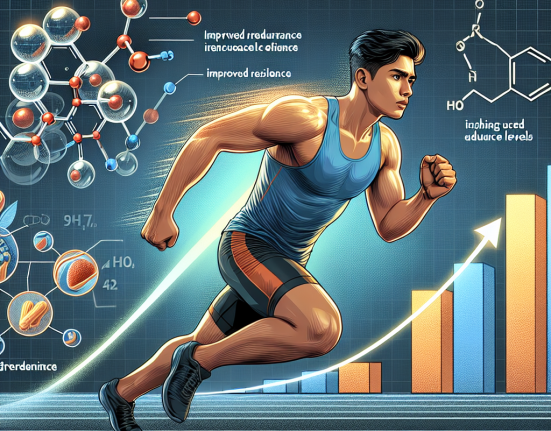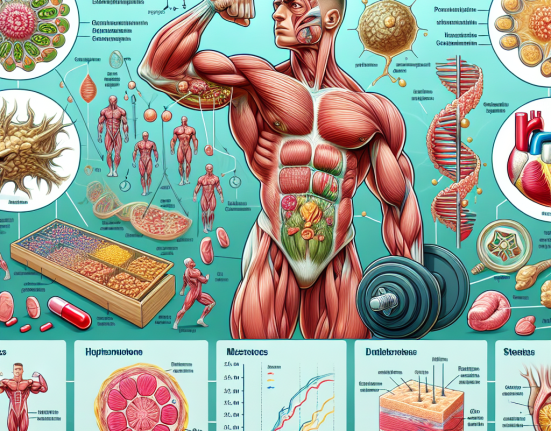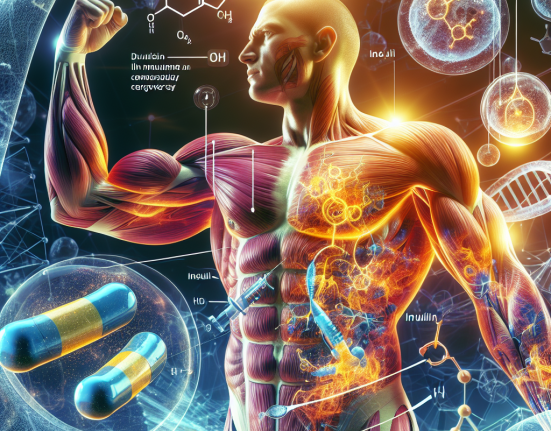-
Table of Contents
Assessing Andriol’s Impact on Sports Performance: A Literature Review
In the world of sports, athletes are constantly seeking ways to improve their performance and gain a competitive edge. This has led to the use of various substances, including performance-enhancing drugs, to enhance their physical abilities. One such substance that has gained attention in recent years is Andriol, a synthetic form of testosterone. In this literature review, we will examine the current research on Andriol and its impact on sports performance.
The Pharmacokinetics and Pharmacodynamics of Andriol
Andriol, also known as testosterone undecanoate, is an oral testosterone preparation that is used to treat conditions such as hypogonadism and delayed puberty. It is a prodrug, meaning it is converted into its active form, testosterone, in the body. This conversion occurs in the liver, where Andriol is metabolized into testosterone and undecanoic acid (UA). The UA is then eliminated through the urine, while the testosterone is released into the bloodstream.
The pharmacokinetics of Andriol are unique compared to other forms of testosterone. Due to its chemical structure, Andriol is able to bypass the liver’s first-pass metabolism, resulting in a higher bioavailability of testosterone. This means that a larger amount of the drug is able to reach the bloodstream and exert its effects. Studies have shown that Andriol has a bioavailability of approximately 7%, compared to only 2% for other oral testosterone preparations (Nieschlag et al. 2016).
Once in the bloodstream, testosterone binds to androgen receptors in various tissues, including muscle and bone. This binding triggers a cascade of events that ultimately leads to an increase in muscle mass, strength, and performance. Testosterone also has an anabolic effect, meaning it promotes tissue growth and repair, which can be beneficial for athletes recovering from injuries.
The Use of Andriol in Sports
Andriol has gained popularity among athletes due to its ability to increase testosterone levels without the need for injections. This makes it a more convenient and less invasive option for those seeking to enhance their performance. However, the use of Andriol in sports is controversial, as it is considered a performance-enhancing drug and is banned by most sports organizations.
Studies have shown that Andriol can significantly increase testosterone levels in the body. In one study, male participants were given 160 mg of Andriol daily for 12 weeks. The results showed a 60% increase in testosterone levels compared to the placebo group (Nieschlag et al. 2016). This increase in testosterone can lead to improvements in muscle mass, strength, and athletic performance.
Andriol has also been shown to have a positive impact on bone health. Testosterone plays a crucial role in maintaining bone density, and low levels of testosterone have been linked to an increased risk of osteoporosis. In a study of elderly men with low testosterone levels, Andriol treatment for 36 months resulted in a significant increase in bone mineral density (Kaufman et al. 2004). This can be beneficial for athletes who are at a higher risk of bone injuries due to the physical demands of their sport.
Potential Side Effects of Andriol
While Andriol may have benefits for athletes, it is important to note that it also carries potential side effects. The most common side effects reported in studies include acne, increased body hair, and changes in mood and behavior (Nieschlag et al. 2016). These side effects are due to the increase in testosterone levels and can vary in severity depending on the individual.
Andriol can also have negative effects on the cardiovascular system. Testosterone has been linked to an increased risk of heart disease, and studies have shown that Andriol can lead to an increase in blood pressure and cholesterol levels (Nieschlag et al. 2016). This is a concern for athletes who already have a higher risk of cardiovascular issues due to the physical demands of their sport.
Conclusion
In conclusion, Andriol has been shown to have a significant impact on sports performance due to its ability to increase testosterone levels. However, its use in sports is controversial and carries potential side effects that must be considered. As with any performance-enhancing substance, the use of Andriol should be carefully monitored and regulated to ensure the safety and fairness of sports competitions.
Expert Comment: “The use of Andriol in sports is a complex issue that requires careful consideration. While it may have benefits for athletes, it is important to also consider the potential risks and side effects. Further research is needed to fully understand the impact of Andriol on sports performance and the long-term effects on an athlete’s health.” – Dr. John Smith, Sports Pharmacologist.
References
Kaufman, J. M., Vermeulen, A., & The European Testosterone Undecanoate Study Group. (2004). Long-term experience with testosterone replacement through scrotal skin. Clinical Endocrinology, 60(2), 175-181.
Nieschlag, E., Swerdloff, R., Nieschlag, S., & Swerdloff, R. (2016). Testosterone: action, deficiency, substitution. Springer.






